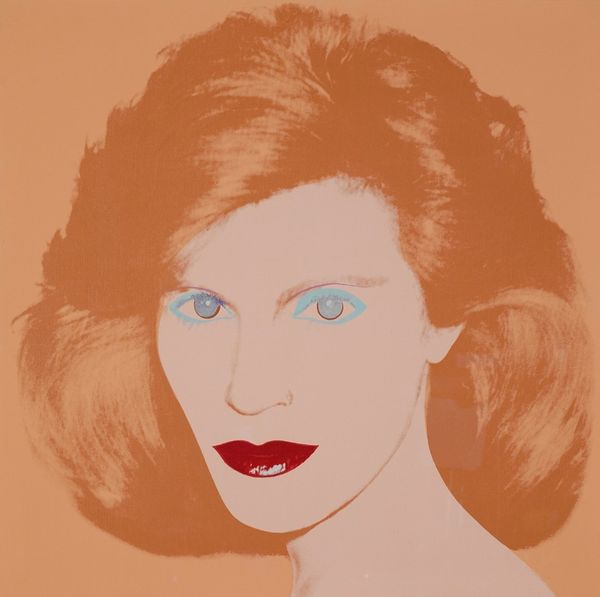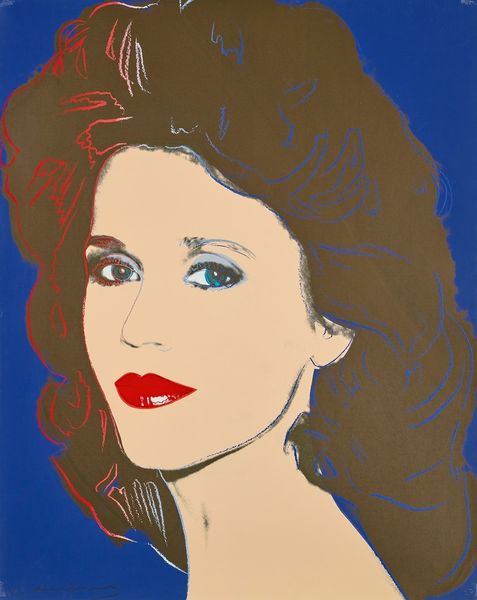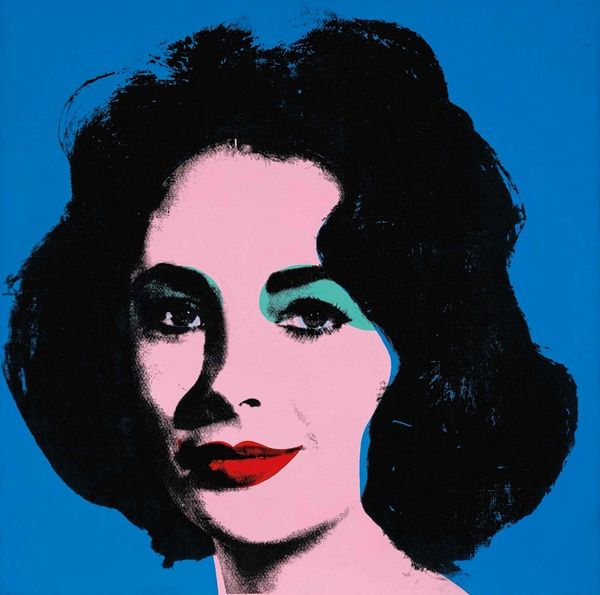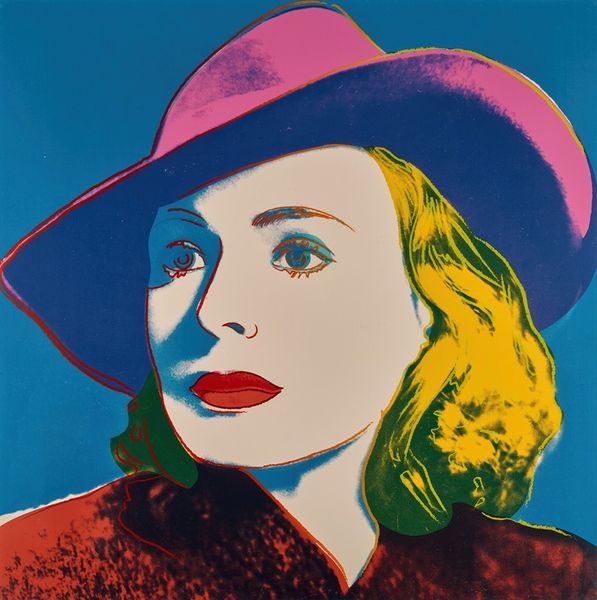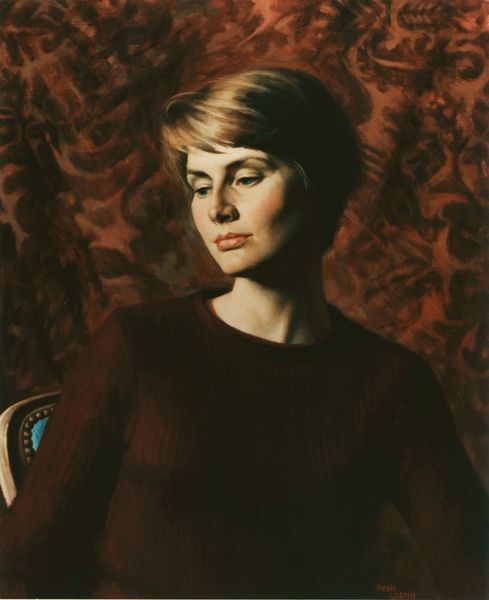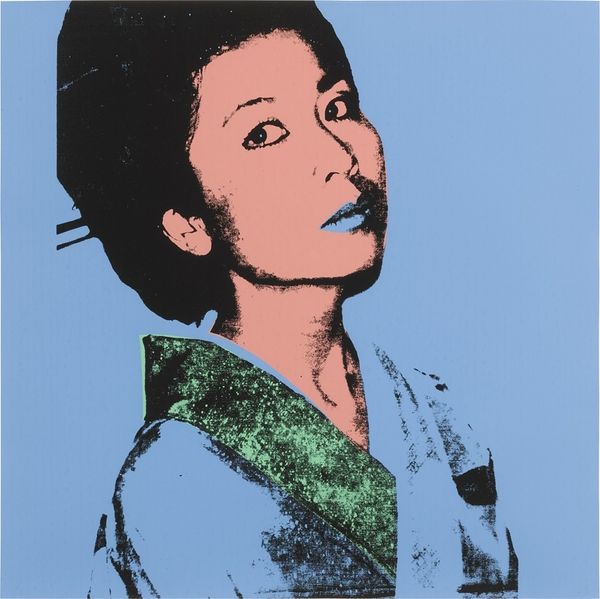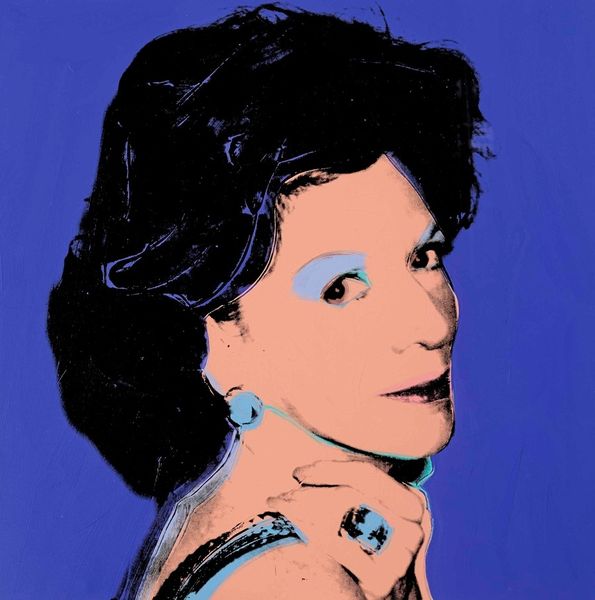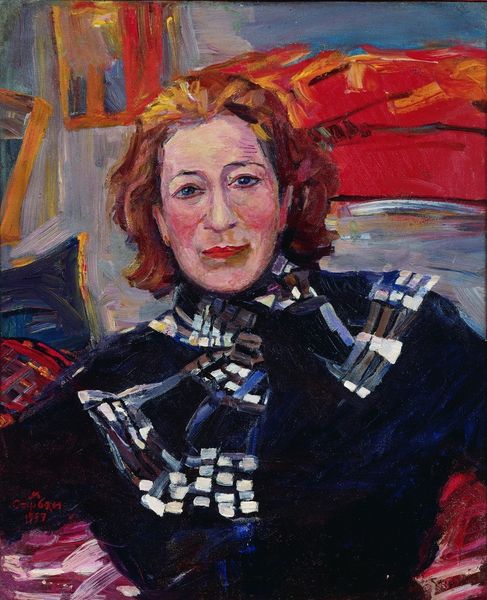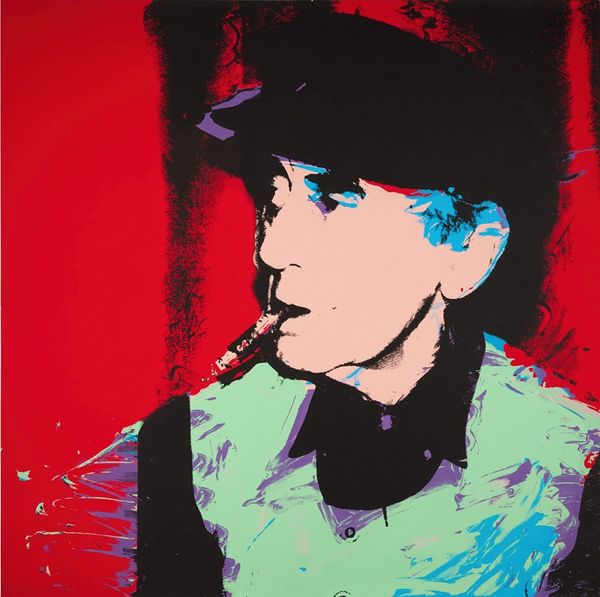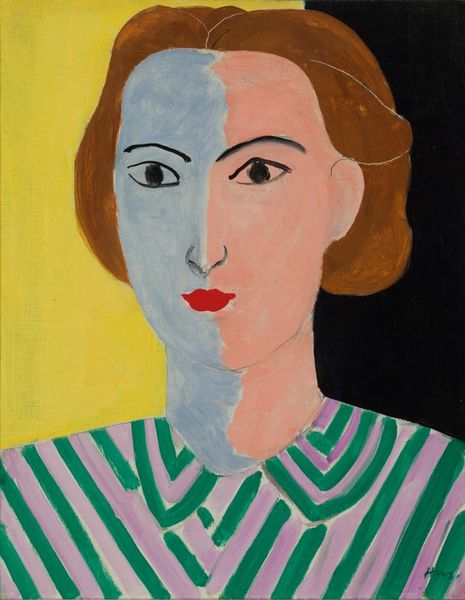
Copyright: Modern Artists: Artvee
Curator: Immediately striking! There's a bold simplicity in the use of acrylic that gives this 1975 portrait, Renate Zimet by Andy Warhol, a uniquely synthetic feeling. Editor: Absolutely, and it's this use of color and those stark lines, particularly around her features, that feel instantly Warholian, invoking ideas of mass production and celebrity. But let’s consider Renate Zimet herself. What narratives were at play during that time? How does this portrait contribute to a discourse on gender, class and status? Curator: Well, Warhol's process itself speaks volumes. He wasn't just painting a face; he was reproducing an image, which complicates the traditional power dynamics of portraiture. It's important to acknowledge this not simply as art but a constructed artifice involving labor. Look closely: each color is precisely laid. Editor: Indeed. We are considering more than aesthetics here. What kind of cultural capital does it bestow? This is a commentary on consumer culture in a very immediate way, the commodification of the person—even in supposed art. What happens to Renate Zimet through this gesture? Does she gain notoriety? Does she lose some fundamental essence in translation? Curator: The portrait flattens her into a commodity. This begs the question about his artistic intentions—whether conscious or unconscious. What kind of material exchange transpired in order to create this work? Did Renate see and understand how her image was manipulated into being essentially...consumed by his creative enterprise? Editor: It's impossible to fully grasp the nature of the arrangement without speaking to its agents—but we can examine its production to consider these larger ideas. His factory-style production challenges that traditional model—craft deconstructed and art reborn! The bright colours and strong contours aren’t mere artistic flair, but reflect Warhol's process to replicate images on a grander scale! It is consumerism, really, masquerading as fine art. Curator: Ultimately, "Renate Zimet" acts as a poignant time capsule. It's an entry point into multifaceted reflections on production and fame at the intersection of Warhol’s gaze, the zeitgeist of 1970s modernity, and this particular individual who became art! Editor: Right, through material deconstruction we unveil layers, prompting necessary considerations about our own cultural norms surrounding image production and consumption.
Comments
No comments
Be the first to comment and join the conversation on the ultimate creative platform.
